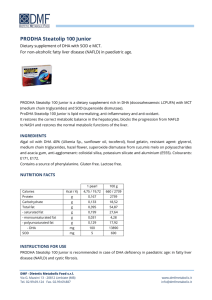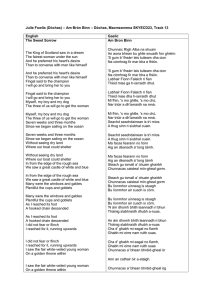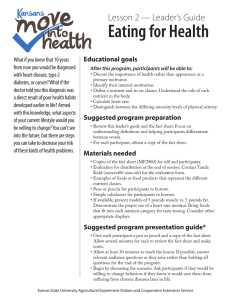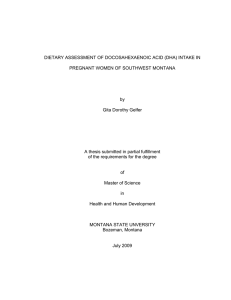M O M M O atters
advertisement
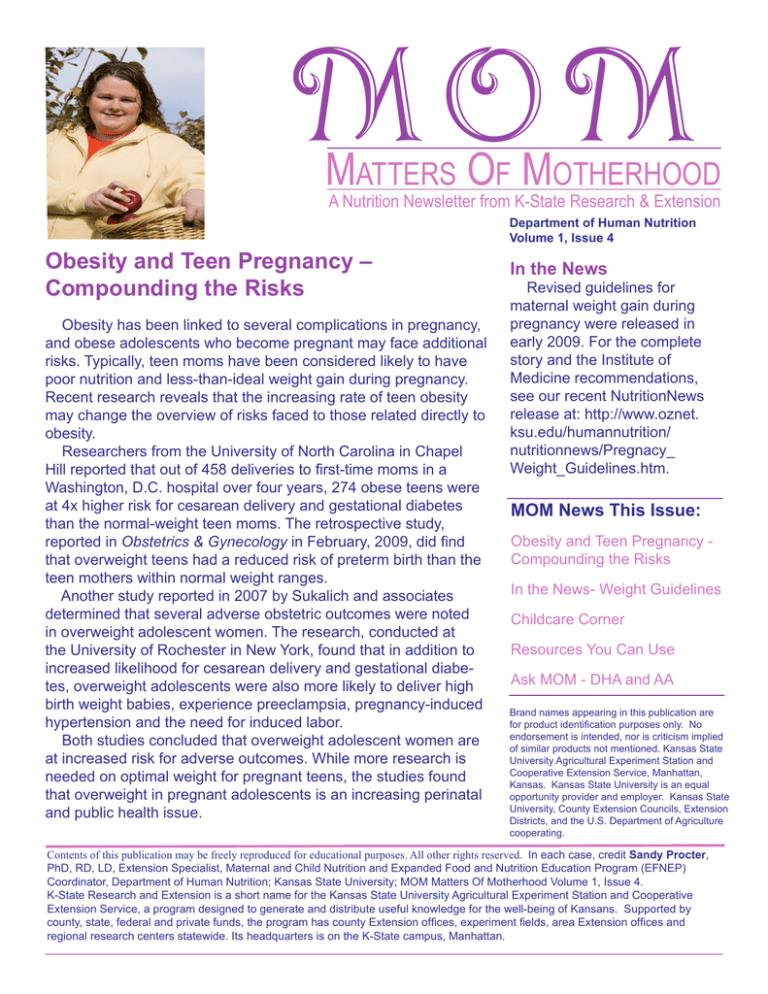
MOM Matters Of Motherhood A Nutrition Newsletter from K-State Research & Extension Obesity and Teen Pregnancy – Compounding the Risks Obesity has been linked to several complications in pregnancy, and obese adolescents who become pregnant may face additional risks. Typically, teen moms have been considered likely to have poor nutrition and less-than-ideal weight gain during pregnancy. Recent research reveals that the increasing rate of teen obesity may change the overview of risks faced to those related directly to obesity. Researchers from the University of North Carolina in Chapel Hill reported that out of 458 deliveries to first-time moms in a Washington, D.C. hospital over four years, 274 obese teens were at 4x higher risk for cesarean delivery and gestational diabetes than the normal-weight teen moms. The retrospective study, reported in Obstetrics & Gynecology in February, 2009, did find that overweight teens had a reduced risk of preterm birth than the teen mothers within normal weight ranges. Another study reported in 2007 by Sukalich and associates determined that several adverse obstetric outcomes were noted in overweight adolescent women. The research, conducted at the University of Rochester in New York, found that in addition to increased likelihood for cesarean delivery and gestational diabetes, overweight adolescents were also more likely to deliver high birth weight babies, experience preeclampsia, pregnancy-induced hypertension and the need for induced labor. Both studies concluded that overweight adolescent women are at increased risk for adverse outcomes. While more research is needed on optimal weight for pregnant teens, the studies found that overweight in pregnant adolescents is an increasing perinatal and public health issue. Department of Human Nutrition Volume 1, Issue 4 In the News Revised guidelines for maternal weight gain during pregnancy were released in early 2009. For the complete story and the Institute of Medicine recommendations, see our recent NutritionNews release at: http://www.oznet. ksu.edu/humannutrition/ nutritionnews/Pregnacy_ Weight_Guidelines.htm. MOM News This Issue: Obesity and Teen Pregnancy Compounding the Risks In the News- Weight Guidelines Childcare Corner Resources You Can Use Ask MOM - DHA and AA Brand names appearing in this publication are for product identification purposes only. No endorsement is intended, nor is criticism implied of similar products not mentioned. Kansas State University Agricultural Experiment Station and Cooperative Extension Service, Manhattan, Kansas. Kansas State University is an equal opportunity provider and employer. Kansas State University, County Extension Councils, Extension Districts, and the U.S. Department of Agriculture cooperating. Contents of this publication may be freely reproduced for educational purposes. All other rights reserved. In each case, credit Sandy Procter, PhD, RD, LD, Extension Specialist, Maternal and Child Nutrition and Expanded Food and Nutrition Education Program (EFNEP) Coordinator, Department of Human Nutrition; Kansas State University; MOM Matters Of Motherhood Volume 1, Issue 4. K-State Research and Extension is a short name for the Kansas State University Agricultural Experiment Station and Cooperative Extension Service, a program designed to generate and distribute useful knowledge for the well-being of Kansans. Supported by county, state, federal and private funds, the program has county Extension offices, experiment fields, area Extension offices and regional research centers statewide. Its headquarters is on the K-State campus, Manhattan. Childcare Corner – www. ellynsatter.com Many nutrition educators and other professionals interested in child development reference Ellyn Satter when the discussion turns to child feeding and family feeding dynamics. Have you checked out her website and the many free resources there? There are many links to useful pages, and pdfs of a variety of reference lists that are helpful in planning for a program or class with childcare providers. Satter, a registered dietitian and licensed social worker, urges use of her oft-repeated Division of Responsibility in Feeding as a basis for all child feeding practices, and the policies that support those practices in public and private agencies. Her “Child Care Feeding Policy,” available in the Guides and Policies section of the website, could serve as the basis for local facilities’ meal time guidelines. Another online example of available resources is Satter’s “Childhood Overweight in the Community” outline that considers many aspects of child overweight, and encourages community-based approaches supporting normal growth and development. Pieces on her site are copyrighted, but reproduction without changes is allowed for free handout. Several of her pieces, including “Is your baby too big?” and the Ellyn Satter’s Division of Responsibility, are available for downloading in Spanish on the website. Resources You Can Use If you are looking for a current, reliable and affordable maternal/child nutrition resource, check out this new book. Expect the Best: Your Guide to Healthy Eating Before, During & After Pregnancy by Elizabeth M. Ward, M.S., R.D. is a 2009 release by the American Dietetic Association. To find out more about this easy-to-read book, visit www. expectthebestpregnancy.com. It is available for $10.85 on amazon. com, and is approved for purchase and use by FNP in Kansas. Ask MOM “What are DHA and AA, and why are they in my baby’s formula?” DHA, or docosahexaenoic acid, is a long-chain polyunsaturated omega-3 fatty acid that plays many roles in a healthy diet throughout the life cycle. In infants, DHA is important for the development of the brain, nerves and eyes. It is also a key component of the heart. AA is arachidonic acid, a long chain omega-6 fatty acid found alongside DHA in breast milk. These two ‘good fats’ appear to promote eye and brain development and possibly increase intelligence in breastfed infants. Like DHA, AA omega-6 is important for proper brain development in infants. When several research studies noted the relationship found between breastfeeding and increased intelligence in infants, it was determined that the two fatty acids DHA and AA may be responsible for the boost. Both DHA and AA are found in breast milk. If the baby is not breastfed, the addition of DHA and AA to infant formula is indicated, according to ongoing research. EPA, another omega-3 fatty acid, should be present in an amount less than that of DHA U.S. infant formula makers first added the fatty acids in 2002. Near-global consensus has followed, with international support for the addition of the two fatty acids recommended in 2008. Current evidence supports the importance of a balanced diet for both pregnant and breastfeeding women, including a regular supply of DHA. Pregnant women should aim for a dietary intake of at least 200mg a day – about two portions of oily fish per week. This recommendation fits within the CDC advisory limiting pregnant and nursing women’s fish consumption due to potential high levels of mercury. AA is found in foods such as meat, eggs and milk. Most women consume enough AA in their diets, but many are at risk for low intake of DHA. Sources: Ward, EM (2009) Expect the best. Hoboken, NJ: John Wiley and Sons. Universidad de Granada: Infant formula must contain DHA omega-3 and AA omega-6, say international experts. Accessed 8/6/09 at http://www.sciencecodex. com/infant_formula_must_contain_dha_omega_3_and_aa_omega_6_say_ international_experts
